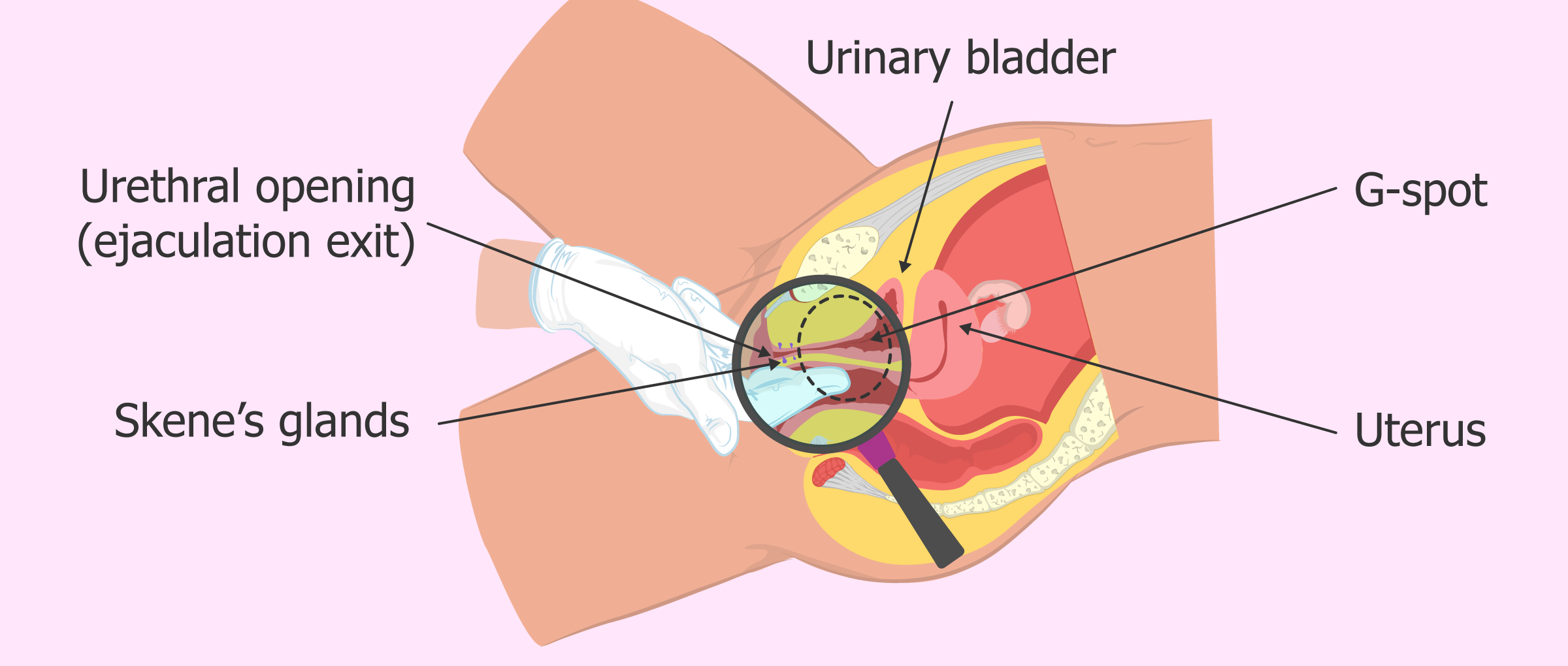
Wait, Does This Really Happen?
Let’s just start here: Have you ever had a moment when you wondered if your body is normal? Like, you’re in the middle of a super intense experience… or maybe after a steamy dream… and—oops—suddenly there’s more fluid than usual and you freeze. Is this okay? Is it just me? Am I supposed to know what’s going on here?
Here’s the short answer: Yes, female ejaculation is a real thing. Yes, it happens in Islamically practicing women’s lives too. And, yes, you are totally normal—even if you’re not totally sure how to tell what’s what yet.
So, What Are We Actually Talking About?
Imagine female ejaculation as that moment in a movie where everything gets a little dramatic—cue surprise, maybe a bit of awe, and sometimes mild panic. The science calls it “female ejaculation” or “squirting.” In Islam, the conversations are more, well, modest, but the experience is acknowledged by scholars and taught by the Prophet (peace be upon him) himself.
The super relevant hadith? Umm Sulaim asked the Prophet whether a woman should perform ghusl (that’s a full shower of purification) if she had an erotic dream and noticed fluid. He replied, “Yes, if she sees water” (see detailed discussion). In other words, if a climax leads to fluid release, you treat it similarly to a man’s experience—no need for embarrassment, just practical advice.
Let’s Clear Up the Jargon
Islamic terms for vaginal fluids pop up everywhere in scholarly texts. Some you may have run across:
- Maniy: The “big event” fluid—thicker, (sometimes) white or yellow, accompanied by that unmistakable climax sensation. This is what you’d call female ejaculation Islamically speaking. If it appears from an orgasm, even without intercourse, it’s maniy (according to Islamic scholars).
- Madhiy: Pre-orgasm, slippery stuff—clear, light, not gushing. Think: the subtle excitement kind of fluid. Happens with arousal, not climax, and you can check Madhiy and maniy in female for a dive into all the varieties in both men and women.
- Wadiy: Thick, sometimes white, that shows up after urination or heavy activity. Usually, it’s not sexual at all.
Mini Table: Maniy vs. Madhiy
| Type | When It Appears | How It Looks/Feels | Islamic Ruling |
|---|---|---|---|
| Maniy | Orgasm/climax, sexual dream | Thick, white/yellow, intense pleasure | Pure, but ghusl must be done |
| Madhiy | Arousal, not climax | Thin, clear, subtle | Impure, wash body & clothes, redo wudu |
Is My Discharge Normal?
You’re not alone if you’ve ever sighed at the endless cycle of “What is this new thing my body is doing?”—honestly, every woman has that moment. Everyday vaginal discharge (spoiler: it happens to everyone) is just your body keeping things balanced. It can be thin, a little sticky, change with your cycle, and really, it’s a badge of being alive.
Scholars—most of them men, keep in mind—tried their best to make sense of all these fluids, but even they threw up their hands in confusion sometimes (see candid commentary). The truth is, medical science and lived experience agree: most daily discharge doesn’t mean you’re impure or need to panic about prayer or purity. That’s especially the case for “regular” discharges (known in Islam as wadiy or just natural moisture).
If you want to geek out even more on this, flip through Types of female discharge Islam for an approachable breakdown, with examples and real-life scenarios.
Spotting the Big Event: How Do I Know If It’s Ejaculation?
This, right here, is what gets so many sisters nervous. Was that just madhiy? Or is this the real what is female ejaculation Islam moment?
Here’s the friendly checklist:
- Did you reach an orgasm (either with a partner or in a dream)?
- Was there a strong pleasurable sensation and a “release” feeling?
- Did a thicker, white/yellowish fluid come out—more than just a dab?
If you’re nodding, that’s likely maniy (female ejaculation in Islamic terms), which means ghusl is the next step before prayer. If not—if it’s just clear, subtle, or doesn’t have that release feeling—it’s probably madhiy, so wash and renew wudu, but no full shower necessary (according to fatwas and hadith).
Personal Anecdote
True story: A friend called me, whispering (as if the walls would blush), “I had a dream and woke up really wet. But was that the thing they talk about in Qur’an class, or just… sweat?” She was mortified, but once she realized she just needed to check for the signs of climax and the kind of fluid, it was a relief. No more panic attacks every morning. Seriously, sometimes just knowing is such a huge comfort.
This Isn’t Just TMI: Science and Faith Meet (Awkwardly But Honestly)
Let’s talk bodily science for a hot second. The medical world, finally catching up to what nature always knew, describes female ejaculation as a release of fluid, often from the Skene’s glands (those mini “female prostates”), at the height of arousal or climax (Flo Health explains it here). Sometimes it happens with every orgasm; for others, never. In fact, studies say anywhere from 10% to over 50% of women experience it at least once. That’s… a lot of us!
Even back in the day, medieval Muslim scholars knew that men and women both contributed “water” (semen/ejaculate) during sex and dreams (historical deep-dive here). The Qur’an mentions the origins of these fluids—right down to the “between backbone and ribs” imagery—and, guess what, modern anatomy actually agrees: ovaries and reproductive glands develop from that area embryologically (scientific findings). Who knew faith and biology could high-five like that?
You’re Not Alone: Everyday Examples for Real Life
Confession: I’ve had conversations in the women’s section after taraweeh where the topic (whispered, always) is “Did you ever… you know… after a dream or a really good day with your husband?” The relief on everyone’s face when they realize, oh, we’re all in this together—it’s magic. It’s still private, still awkward, but when shame melts away, understanding moves in. (And suddenly, that stack of towels in your bathroom makes a lot more sense!)
If you want to see more examples—and get less cryptic explanations—wrap your brain around Madhiy and maniy in female. It was honestly a game-changer for me; it makes everything so much less mysterious and scary.
Table: Quick Scholar-Opinion Cheatsheet
| Discharge Type | How to Tell | Purity Ruling | Required Action |
|---|---|---|---|
| Maniy (Ejaculate) | Strong climax, thick/white/yellowish fluid | Pure | Ghusl (full shower) |
| Madhiy (Arousal) | Subtle excitement, clear, little to no scent | Impure/naajis | Wash area, redo wudu |
| Wadiy | After urination/heavy activity, thick, no link to sex | Impure/naajis | Wash, redo wudu |
| Normal discharge | Throughout cycle, may vary, usually clear/white | Differing opinions | Many scholars: No ghusl, renew wudu if prudent |
But What If I’m Not Sure?
Ah, the classic “did I just…?” freakout. Listen—you don’t have to become a forensic scientist. Islam offers flexibility: if you’re genuinely unsure whether your discharge is maniy or madhiy, scholars allow you to act according to your best judgment (ruling details here). No endless second-guessing. You know your own body best.
Seriously, if you’re torn, follow the practical steps: check out texture and signs, think about what you were doing or feeling, and—worst-case—renew wudu or ghusl just to be safe. The most important thing is your intention and effort, not perfection.
Key Takeaways for Every Woman (and Supportive Spouse!)
- What is female ejaculation Islam? It’s recognized in both faith and science, and it happens to many women—sometimes more, sometimes never.
- If you reach climax and notice “special” fluid (strong sensation, thick/white, not just clear/regular moisture), ghusl is required before praying.
- Daily-regular discharge (not from orgasm, not thick like maniy)? Most scholars say: just renew your wudu if you feel icky—skip the anxiety, you’re not impure for simply being a woman.
- Confused? Chill. Scholars literally say: go with your best judgment, no need for mental knots.
- Questions about other discharge types, like wadiy or what’s unique to your cycle? Types of female discharge Islam delves into all those what-ifs.
One Last Story… Because That’s How We Bond
A newlywed couple I know had a nighttime “spill”—let’s keep it PG—then froze: Is this a Fiqh emergency? Rather than descend into a rabbit hole of YouTube scholars, they checked some trusted links, laughed off their confusion, performed a quick ghusl, and moved on…all before breakfast. Sometimes sharing a messy moment makes you stronger and sparks better communication, right?
Wrapping It Up—You’ve Got This
Whew! We just navigated what is female ejaculation Islam style, with no shame and awful clinical jargon left behind. Your body was crafted by Allah with complexity and care—there’s wisdom (and proof!) in every process. Let go of the self-critique; nobody’s ever had their faith measured by the type of discharge they produce.
Remember: treat the “special” climax fluid (maniy, female ejaculation) as pure, but shower it off for prayers. Arousal fluids? Just clean up and renew your wudu. Regular daily discharge? Most times, a quick wudu or nothing special. There’s so much more to life, love, and faith than endless body anxieties.
If this left you with questions, explore Madhiy and maniy in female or scan the approachable breakdown in Types of female discharge Islam. And maybe, just maybe, grab some tea and swap your own story with a friend.
Breathe easy, take care of your body, and never let hidden fears steal your joy (or your prayers). You’ve already taken the first step by reading—now, go live knowing you’re both spiritually and bodily ready for whatever comes. You got this, sister.


















Leave a Reply
You must be logged in to post a comment.